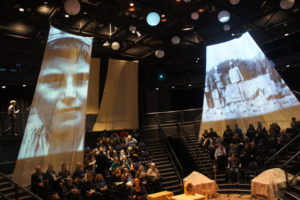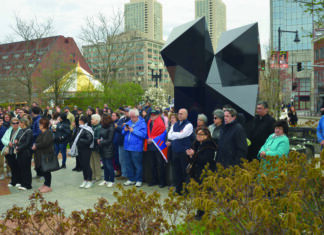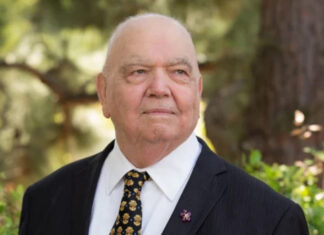By Aram Arkun
Mirror-Spectator Staff
MEDFORD, Mass. – The final Tufts University performance of Joyce Van Dyke’s play “Daybreak” took place on November 8 at the Balch Arena Theater of the Tufts Department of Drama and Dance. The actors, students at Tufts directed by Prof. Barbara Walla

ce Grossman, did an impressively good job, delivering professional and moving performances, while the theater setting itself was impressively transformed to reflect the themes of the play.
The floor had a hand-stenciled lacework design (unfortunately to be painted over after the final performance), and hanging bands of fabric cocooning the inside of the amphitheater serving as screens for projected colored lights and images initially reminded one of the inside of the Armenian Genocide memorial at Tsitsernakaberd in Yerevan, with its inwardly inclined twelve slabs of stone.
The three-scene play deals with the experiences of two women who survived the Armenian Genocide, and the way survivors dealt with the traumatic memories and great personal losses over decades. It raises questions of memory and transmission, and even manages to expose racism and prejudice among Armenian survivors, showing that no people are immune from such flaws. It imagines that with time, something “beyond reconciliation” may occur, and though some may not agree with its formulation, the play does point people in a direction of hope and optimism despite the grimness of its topic.








